|
Think of a leader you admire, and list three of the qualities that make him or her a good leader. Which quality do you share with him or her? Which quality could you improve upon?
35 Comments
Write about a scenario depicting both poor and exceptional professionalism in the workplace you have observed in the last two months.
Write about how you could apply the communication process to future situations to improve outcomes. Remember, the communication process uses the mental and physical energy of people who speak, listen, use nonverbal behaviors, and interpret the verbal and nonverbal behaviors.
Write about an experience in the last six weeks in which improved communication would have been beneficial to all persons involved. This can be a school-related experience or a personal experience.
Who won the presidential debate? Really, it depends who you ask. So, we won't ask you to post that here. Body language and non-verbal communication often have an outsized impact on our political perceptions. After watching a portion of the first of three debates between Hillary Clinton and Donald Trump in 2016, what did we learn about the body language and nonverbal communication of the two candidates? What perceptions can we, as voters, take away from this clip concerning both candidates? Forgiveness is letting go of anger and resentment you feel towards somebody who has done something to you. You may forgive someone for something minor like bumping into you or taking your seat. You may forgive someone for something like leaving you out of an important event or forgetting to call you on your birthday. You may forgive someone for something major like breaking up with you or physically hurting someone in your family. Forgiveness is not easy and it might take a long time to forgive someone or for someone to forgive you. Watch the following videos about forgiveness: What would you have done in each situation. Could you have forgiven the person? Why or why not?
Read or watch the story below. What lesson in communication did you learn? What is the moral to this story? What does this story tell us about moments? What would have happened if the cab driver would have done one thing differently? Think on these things...what is the lesson you take away from this story, this moment? The Last Cab Ride Posted by Stephen on November 20, 2009 in Life, Moral Stories Twenty years ago, I drove a cab for a living. One time I arrived in the middle of the night for a pick up at a building that was dark except for a single light in a ground floor window. Under these circumstances, many drivers would just honk once or twice, wait a minute, then drive away. But I had seen too many impoverished people who depended on taxis as their only means of transportation. Unless a situation smelled of danger, I always went to the door. This passenger might be someone who needs my assistance, I reasoned to myself. So I walked to the door and knocked. “Just a minute,” answered a frail, elderly voice. I could hear something being dragged across the floor. After a long pause, the door opened. A small woman in her 80’s stood before me. She was wearing a print dress and a pillbox hat with a veil pinned on it, like somebody out of a 1940s movie. By her side was a small nylon suitcase. The apartment looked as if no one had lived in it for years. All the furniture was covered with sheets. There were no clocks on the walls, no knickknacks or utensils on the counters. In the corner was a cardboard box filled with photos and glassware. “Would you carry my bag out to the car?” she said. I took the suitcase to the cab, then returned to assist the woman. She took my arm and we walked slowly toward the curb. She kept thanking me for my kindness. “It’s nothing,” I told her. “I just try to treat my passengers the way I would want my mother treated.” “Oh, you’re such a good boy,” she said. When we got in the cab, she gave me an address, then asked, “Could you drive through downtown?” “It’s not the shortest way,” I answered quickly. “Oh, I don’t mind,” she said. “I’m in no hurry. I’m on my way to a hospice.” I looked in the rear view mirror. Her eyes were glistening. “I don’t have any family left,” she continued. “The doctor says I don’t have very long.” I quietly reached over and shut off the meter. “What route would you like me to take?” I asked. For the next two hours, we drove through the city. She showed me the building where she had once worked as an elevator operator. We drove through the neighborhood where she and her husband had lived when they were newlyweds. She had me pull up in front of a furniture warehouse that had once been a ballroom where she had gone dancing as a girl. Sometimes she’d ask me to slow in front of a particular building or corner and would sit staring into the darkness, saying nothing. As the first hint of sun was creasing the horizon, she suddenly said, “I’m tired. Let’s go now.” We drove in silence to the address she had given me. It was a low building, like a small convalescent home, with a driveway that passed under a portico. Two orderlies came out to the cab as soon as we pulled up. They were solicitous and intent, watching her every move. They must have been expecting her. I opened the trunk and took the small suitcase to the door. The woman was already seated in a wheelchair. “How much do I owe you?” she asked, reaching into her purse. “Nothing,” I said. “You have to make a living,” she answered. “There are other passengers.” Almost without thinking, I bent and gave her a hug. She held onto me tightly. “You gave an old woman a little moment of joy,” she said. “Thank you.” I squeezed her hand, then walked into the dim morning light. Behind me, a door shut. It was the sound of the closing of a life. I didn’t pick up any more passengers that shift. I drove aimlessly, lost in thought. For the rest of that day, I could hardly talk. A true story by Kent Nerburn Please read the following excerpt below and respond to the last question:
"The Lizard Becomes Your Legacy" from Who Put a Lizard in My Lasagna? by Sam Glenn What do you want to be remembered for? When you look back on your life, what will others remember about you? What will your legacy be? Did you use up the best of who you are, or will there be leftovers? The lizard experience was something my mom started by using her uniqueness mixed with a positive attitude. It will be something she will always be known for—hiding a toy lizard in my lasagna and setting something positive in motion that would impact many people. We all have the ability to create a legacy for ourselves when we care enough to give the best of who we are with a positive attitude. Your Extraspecial Signature In the old TV show, the Lone Ranger always left behind a symbol of his greatness—a silver bullet. Zorro did something similar. Whenever he did a good deed, he left his mark, the letter Z, scratched on a wall with his sword. I leave toy lizards that, if mixed with a positive attitude, will have a positive impact. What do you want to be remembered for? I want to be known for my kindness and sincerity. That's part of my extraspecial signature. I like to do nice things for others. It doesn't matter if I'm at work or at home, in public or around only one other person. If the opportunity presents itself to act, I do. This is meaningful to me because of all the people who have done kind things for me. Because of their actions, I am motivated to do the same. It's a pet peeve of mine to see rudeness. There is not a single benefit to being rude. None. In fact, even when rudeness might be justified, it's better for everyone to be kind. I was once so tired during a flight home that I fell asleep on the shoulder of the woman next to me. When I woke up, I started laughing and apologized. She might have given me a piece of her mind or even a dirty look. Instead, she smiled and said, "It was my pleasure. You are welcome to finish your nap there if you'd like." Her gesture was sweet and sincere. It also helped that I hadn't drooled on her! To act with kindness is to take an opportunity to build a legacy. Maybe your act of kindness is to get involved with a cause that helps children with cancer. Maybe it's being a source of encouragement for others. We've all had times when we've needed help and wondered whom we could call on. What will your legacy be? After watching the video, what public speaking mistakes are you making? How can you overcome these mistakes? Watch the video in its entirety below. Respond with your thoughts: What are you thinking and why? What does it mean (to you) when they say in the video, "Our deepest fear is not that we are inadequate; our deepest fear is that we are powerful beyond measure." If you are having issues getting the video below to play in the window provided, you may access it by clicking here. Watch the video below. What is your reaction? What are you personally motivated to do as a result of watching the video? How can you use the information in this video to assist you as you progress toward your goals? (Note: Follow the link to the video on YouTube once you click on the video below). React and respond to the following message below...what are your thoughts?
{"It's easy to doubt if our "active" passions have a purpose or leave an impact. We ask ourselves: Does it matter? What if we put our whole heart and soul into our passion and it doesn't turn out right? How can we have confidence the work we are doing will be a success? The quote below gives me so much reassurance. "What is done in love is done well." Plain, simple, and true. I wonder what would happen if we approached our active passions with this mentality. I truly believe we would be less hesitant and be more likely to leave a trail of positive change behind us."} SOURCE: The message above was originally posted and created by the The Daily Positive. Please read the information below as written, researched and provided by Jim Kouzes and Barry Posner in The Student Leadership Challenge. Please respond to this journal by responding to the question/s below the passage.
"When students described their personal-best projects, they told of times during which they imagined an exciting, highly attractive future for their organization. Leaders are driven by their clear image of possibility and what their organization could become. Student leaders Inspire a Shared Vision by envisioning the future and enlisting others in a common vision. “I soon found myself responsible for leading all these people in a controversial program at our school that had never been attempted,” explained Kyle Ozawa. “I needed to inspire my peers with the vision I had. In order for this to work out, every one of the upperclassmen involved in the pro- gram needed to share the same vision. . . . I explained why our help was needed and how we had the ability to really make an impact on their lives. I learned that leaders are not the people who set the goals; they are the ones who help people envision them as their own.” Leaders gaze across the horizon of time, imagining the attractive opportunities that are in store when they and their constituents arrive at a distant destination. Leaders passionately believe that they can make a difference. They have a desire to make something better than it is today, change the way things are, and create something that no one else has ever produced. Yet visions seen only by leaders are insufficient to create an organized movement or a significant change in a product, let alone in an organization. A person with no constituents is not a leader, and people will not follow until they accept a vision as their own. Leaders cannot command commitment; they can only inspire it. What may begin as “my” vision emerges as “our” vision. To enlist people in a vision, leaders must get to know their constituents and learn to speak their language. Other people must believe that leaders understand their needs and have their interests at heart if they are to sign up for journeys into the future. Leaders forge a unity of purpose by showing constituents how the dream is for the common good. Leaders breathe life into visions—through vivid language and an expressive style. Their own enthusiasm and excitement are contagious and spread from the leader to constituents. Their belief in and enthusiasm for the vision are the sparks that ignite the flame of inspiration. Leaders uplift people’s spirits with an ennobling perspective about why they should strive to be better than they are today. What are you doing in your life right now to communicate you "Inspire a Shared Vision" to your fellow students across the high school campus as mentioned in the passage above? Please provide examples. How are you making Sherman High School better than it was yesterday? What would be / what is your vision for the school? Source: The Student Leadership Challenge by Jim Kouzes and Barry Posner Please read the information below as written, researched and provided by Jim Kouzes and Barry Posner in The Student Leadership Challenge. Please respond to this journal by responding to the question/s below the passage.
"The most important personal quality people look for and admire in a leader is personal credibility. Credibility is the foundation of leadership. If people don’t believe in the messenger, they won’t believe the message. Titles may be granted but leadership is earned. Student leaders Model the Way by finding their voice and affirming shared values. As captain of his volleyball team, Mark Almassy talked about the critical importance of leading by example: “I always showed up early to practice and oftentimes stayed late. There was nothing I wasn’t willing to do. I was not too good to mop the floor or too cool to shout words of encouragement to a freshman. I knew that my actions spoke louder than my words, so I made sure to show people what to do rather than tell them what to do.” Leaders are supposed to stand up for their beliefs, so they’d better have beliefs to stand up for. Leaders must be clear about their guiding principles. They must find their own voices, and then they must clearly and authentically give voice to their values. Yet leaders can’t simply impose their values on others and expect commitment. They have to engage others in common aspirations. Modeling the Way begins with the clarification of personal values and involves building and affirming shared values that all can embrace. Eloquent speeches about common values are not nearly enough. Exemplary leaders know that it’s their behavior that earns them respect. The real test is whether they do what they say—whether their words and deeds are consistent. Leaders set an example and build commitment through simple, daily acts that create progress and build momentum. The personal-best leadership case studies we examined were distinguished by the fact that all of them required relentless effort, steadfastness, competence, and attention to detail. It wasn’t the grand gesture that had the most lasting impact. Instead it was the power of spending time with someone, of working side-by-side with colleagues, of telling stories that made values come alive, of being highly visible during times of uncertainty, of handling critical incidents with grace and discipline, and of asking questions to get people to focus on values and priorities." What are you doing in your life right now to communicate you "Model the Way" as mentioned in the passage above? Please provide examples. Have you found your voice as a student leader? If so, what is your voice and how are you utilizing it? If not, what must happen for you to find your voice? Source: The Student Leadership Challenge by Jim Kouzes and Barry Posner What does Labor Day mean to you - how do you and your family choose to celebrate the national holiday? How has the meaning of Labor Day been communicated to you? What do you think the poster below is trying to communicate about Labor Day (go beyond the words)?
Tell where you are in the Maslow Hierarchy. Do you have basic physical needs met? Why or Why not? Do you have a general feeling of safety? Why or why not? Do you have others that are accepting of you? Who are those people? Are there people you feel are not accepting of you? If not, why do you think that is? What is your level of self-esteem? What do you think it would take to reach the level of self-actualization? (Please answer all questions - Click on Mr. Maslow's picture below to learn more information about him.) Write about a time in your life when you struggled with a choice and made the right one.
Describe a person and time where you observed superior communication skills. What did the person do to make you feel like they were superior communicators? What made the moment memorable? What impact did that person and moment have on your life?
Congratulations, you have now completed your first speech in class! What have you learned about yourself when it comes to giving speeches? How can you improve for future speeches? What do you feel you got right? What do you feel you got wrong? What words of encouragement would you have for a future student who may be about to give their first speech?
Please answer the following questions in your initial journal response. What did you most enjoy doing the first week of school (Provide a clear example)? Who made you feel good this past week (How)? Is there anything you did this past week that you wish you’d done differently (What)?
What is your career goal? How will knowing your strengths, weaknesses and preferences (as learned through the hemispheric dominance inventory) assist you in choosing and/or changing your career goal? How will knowing your brain dominance assist you in obtaining your career goal?
What was the most interesting thing you discovered after completing the hemispheric dominance inventory? What made the discovery interesting? - If you felt the hemispheric dominance inventory was wrong, tell me why you felt like the analysis was incorrect?
What traits are most important for a skilled communicator? What is the strongest trait you possess as a communicator? What is the trait you need to work on the most as a communicator? Why? (Note: Please answer all questions) - Follow directions located to the right on the computer or located below on a mobile device.
|
Details
2016 Journals
For class responses: Respond to the question/s in a minimum of three sentences. Then, respond to two of your classmates' (colleagues') responses by hitting the "reply" button at the end of their post. Archives
October 2016
Categories |


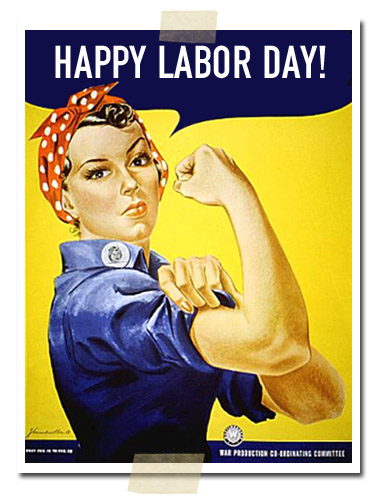
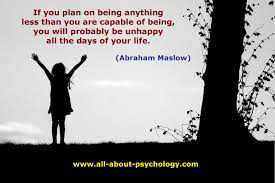
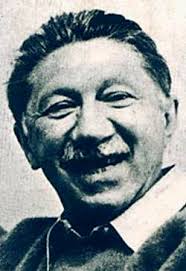
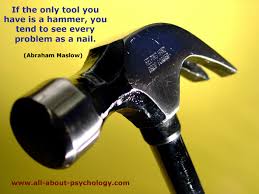
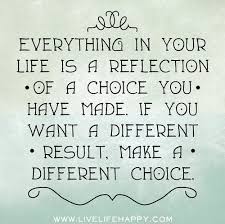

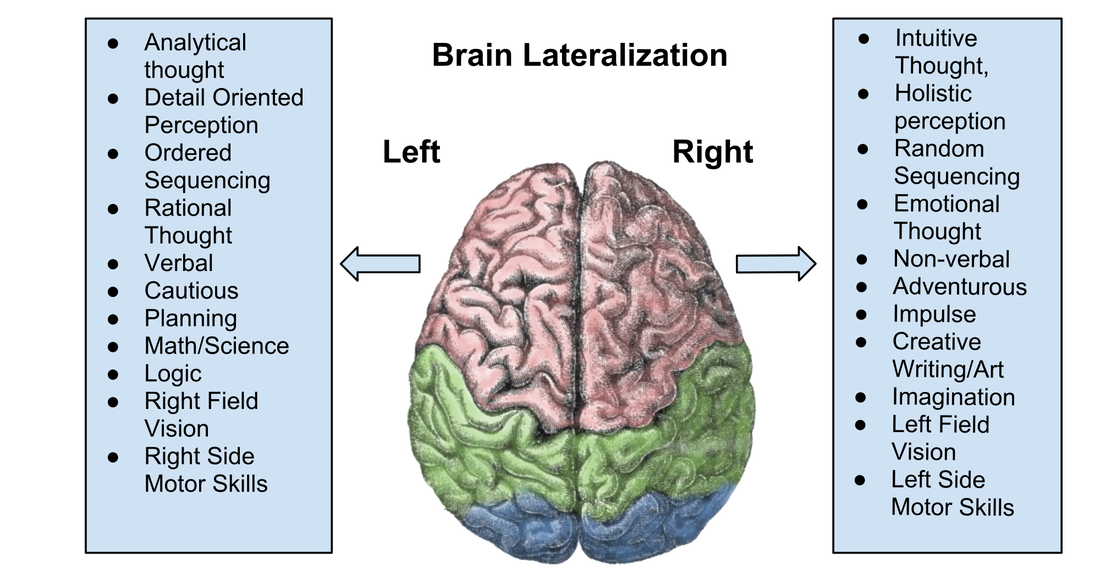
 RSS Feed
RSS Feed